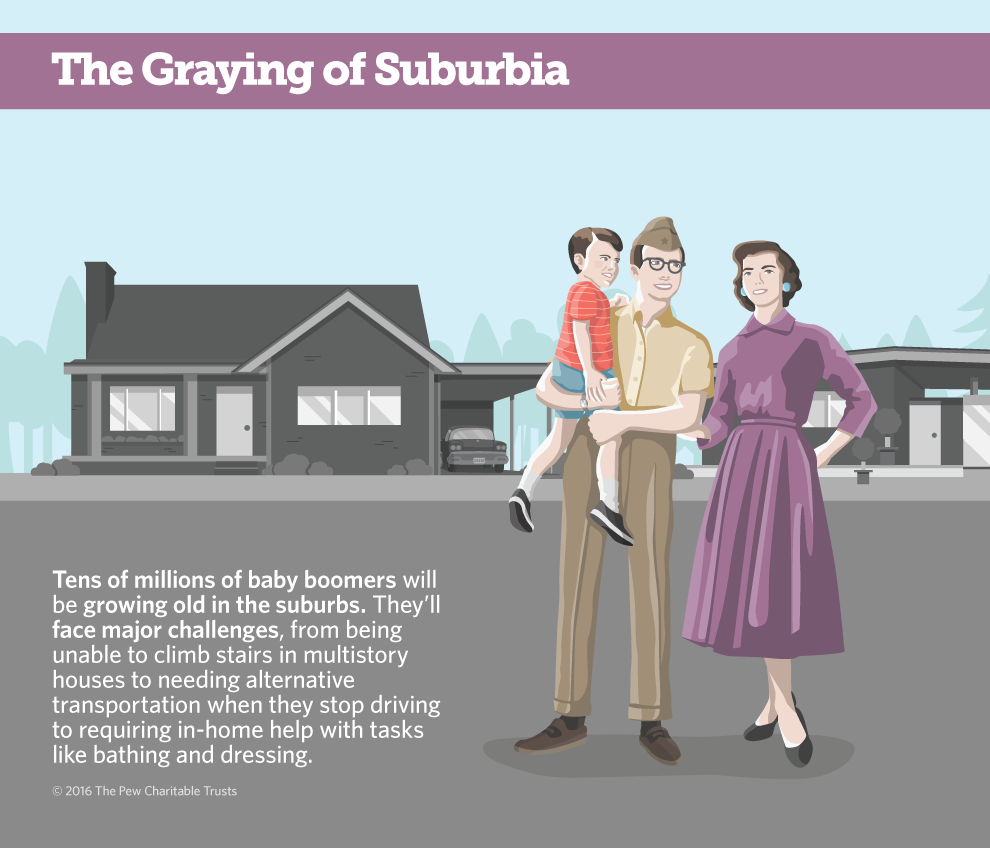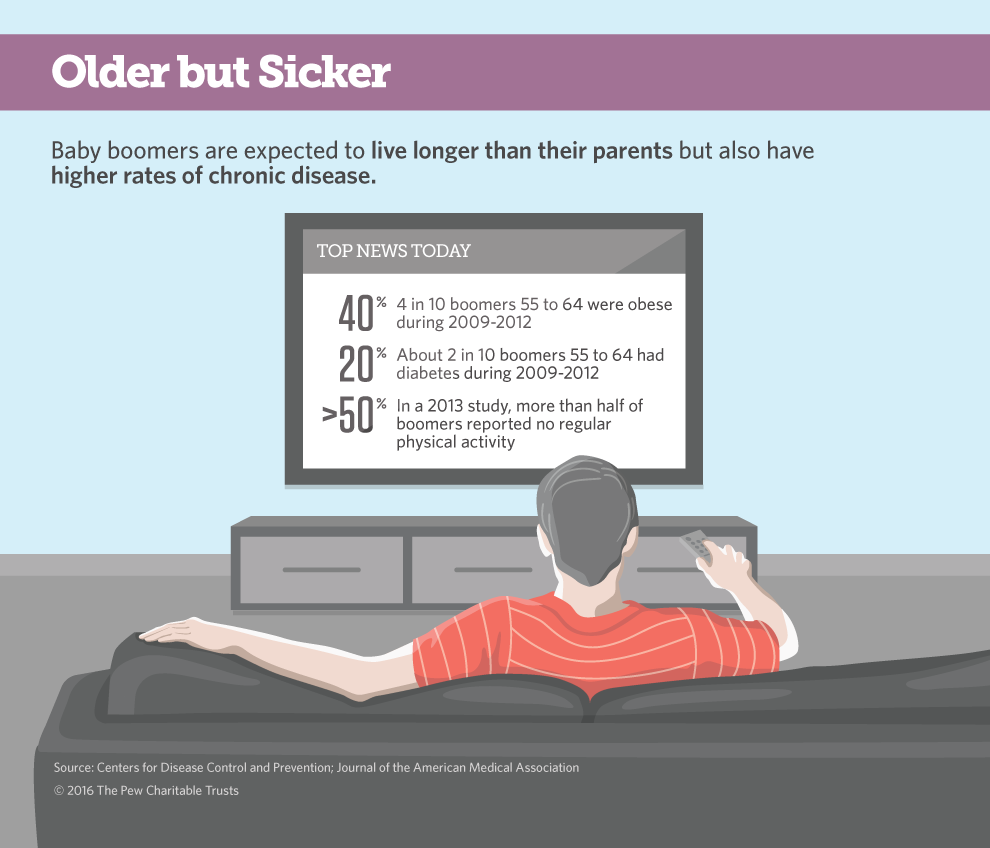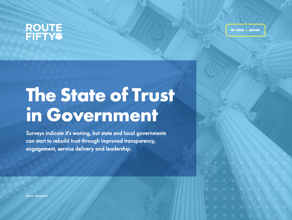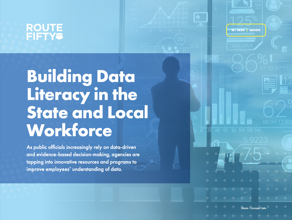Connecting state and local government leaders
The American suburbs are already aging. But car-centric neighborhoods with multilevel homes and scarce sidewalks are a poor match for people who can’t climb stairs or drive a car.
This article was originally published at Stateline, an initiative of The Pew Charitable Trusts, and was written by Jenni Bergal.
CENTENNIAL, Colo. — Greg Glischinski and his wife, Sheri, have lived in their two-story brick and wood Colonial-style house for more than three decades. The retirees, both in their 60s, want to stay where they are for the rest of their lives.
But their house has no bedroom or full bathroom on the first floor. It is on a cul-de-sac, and public transportation options are limited. As they grow older, the Glischinskis may need in-home assistance with tasks like bathing, dressing and preparing meals — an expensive proposition.
“It’s a huge problem for boomers,” said Greg Glischinski, 66. “Quite frankly, I don’t know what we’re going to do.”
Turns out the kids who listened to rock ’n’ roll on their transistor radios and watched spellbound as men walked on the moon — the first American generation raised in the suburbs — want to grow old there.
In fact, the American suburbs, built for returning GIs and their burgeoning families, are already aging. In 1950, only 7.4 percent of suburban residents were 65 and older. By 2014, it was 14.5 percent. It will rise dramatically in the coming decades, with the graying of 75.4 million baby boomers mostly living in suburbia.
But car-centric suburban neighborhoods with multilevel homes and scarce sidewalks are a poor match for people who can’t climb stairs or drive a car.
“Most [boomers] are in a state of denial about what really is possible and what’s reasonable for them as they age,” said John Feather, a gerontologist and the CEO of Grantmakers in Aging, a national association of foundations for seniors.
Mildred Warner, professor of city and regional planning at Cornell University, said too many Americans are “living in a Peter Pan world.” People become “more feeble” as they age, she said, and communities need to plan and budget for that.
But state and local officials are largely unprepared to handle heightened demands for transportation, affordable housing and long-term care. One study estimated that spending on public transit would have to increase 81 percent, to $8.6 billion, by 2030 to meet the needs of seniors who want to stay in their homes.

Some researchers foresee conflicts between seniors and families with school-age children over increasingly scarce government resources. Many working- and middle-class retirees, some of whom are trapped in their suburban homes because they are still underwater — they owe more on their mortgages than their homes are worth — won’t be able to afford to modify them to make them livable in old age. Some live in areas where the cost of renting or buying elsewhere would be higher than what they already pay. And subsidized housing for seniors is in short supply in the suburbs.
“The graying of suburbia is going to become the central challenge of the country and the suburbs,” said Lawrence Levy, executive dean of the National Center for Suburban Studies at Hofstra University in Hempstead, New York. “Most suburbs are not ready. They don’t have the resources, experience or ability to deal with these big issues.”
Boomers in the Burbs
This year, the oldest boomers started turning 70. The youngest will be 52. By 2035, there will be 77 million Americans aged 65 and over, up from about 48 million in 2015.
Nearly two-thirds of boomers in metropolitan areas lived in the suburbs in 2014, and most want to age there, according to national surveys.
Demographers agree that as people age, they tend to stay where they are. “Older people don’t move that much,” said William Frey, demographer and senior fellow at the Brookings Institution’s Metropolitan Policy Program.
“The boomers might have moved into the city for a while to feel their oats, go to college or sample the nightlife. But typically they moved back to the suburbs when they had kids and pretty much stayed there,” Frey said. And now, because boomers are such a big group, the senior population is set to surge all across the country.
Boomers are expected to live longer, and retire later, than earlier generations. But they also have higher rates of chronic disease, and don’t have the retirement savings their parents did. Many members of the generation that sang “I hope I die before I get old” have not planned for old age.

More than one in four households age 55 to 64 has no retirement savings from a 401(k), an IRA or a pension, a recent federal report found. Their median net worth is about $9,000 and 91 percent of them have less than $25,000 in financial assets. Nearly half of boomers are still paying off their homes and eight in 10 hold some form of debt, according to a 2015 study by the Pew Charitable Trusts (Pew also fundsStateline).
The Glischinskis, in Colorado, had built up their 401(k)s and were feeling good about their financial future until they both were struck by serious health issues.
“We’ve had to cash out our retirement nest eggs to pay bills,” Greg Glischinski said. “You try to plan, but all of a sudden, something else gets in the way.”
Retirees who want to stay in the suburbs will have to cover the rising costs of property taxes and utilities, and they may have to shell out big sums to retrofit their homes if they become frail or disabled. One study found that it can cost $800 to $1,200 to widen a doorway to accommodate a wheelchair, $1,600 to $3,200 for a ramp, and up to $12,000 for a stair lift. Major remodeling, such as adding first-floor bedrooms or bathrooms, can cost much more.
Some empty nesters will sell their suburban homes and move into hip urban downtowns, but they are an affluent, niche market.
For Wendell Cox, of Demographia, a public policy consulting firm, the idea that a wave of aging boomers will flood downtown neighborhoods is “a lot of hype and baloney.”
“Most people aren’t going to move to Washington [D.C.] and pay $1 million for a condo,” Cox said. “If they do move from the suburbs at all, it usually will be farther out.”
Cul-de-Sac Culture
Suburbanites rely on their cars to get everywhere, whether it’s picking up groceries, dropping off dry cleaning or meeting friends for dinner.
But as people grow old, they no longer may be comfortable — or able — to drive. That may mean relying on public transit, which often is scarce in suburbia. And that’s expected to have a major impact on local and state government, which will face increasing pressure to provide transportation.
In Illinois, for example, where one in five residents is projected to be 65 and over by 2030, transportation for older adults will be “particularly challenging” in suburbs and rural areas that lack a fixed-route transit system, according to a July 2014 report by the University of Illinois at Chicago and the Urban Transportation Center. The report urges Illinois officials to take steps now to develop alternatives.
A Georgia Council on Aging report notes that the majority of older residents live in the suburbs, which are filled with “un-walkable” areas that make it difficult for them to remain active and healthy.
“Significant suburban cul-de-sac development has created isolated and segregated communities that offer limited transportation alternatives to the car,” the report found.
Boomers who age in their homes in the suburbs will be facing many of the same challenges older seniors already are dealing with. Take Maxine McArn, a 90-year-old widow who fends for herself most of the day in her single-family home of 30 years, in suburban Kansas City. Although her son lives with her, he works long hours and isn’t around much.
McArn, who gave up driving many years ago, says transportation is her biggest challenge. She relies on friends and relatives to take her where she needs to go. “I’m blessed I have family and friends. People who don’t are in trouble,” she said.
But she worries about the strain that places on family members, who have their own lives and responsibilities. “Your family works and you don’t want to bother them all the time,” she said. “They need time off. They don’t need to be driving me around the town.”
Even if a suburb has a regional transit system, the routes are often limited and geared to help commuters get to and from work in the city. The nearest bus or train stop may be miles from the subdivisions where aging boomers live. And while the Americans with Disabilities Act requires most public transit systems to provide pickup “paratransit” for people with disabilities who are unable to use regular bus or train services, that applies only to people who meet certain criteria.
One alternative is transportation services overseen by a federally funded network of local agencies that offer services and support to older adults to help them age at home and in the community. In many regions, these Area Agencies on Aging contract with local providers that offer door-to-door van services to older adults who qualify. But those programs, often geared to taking seniors to medical appointments and grocery stores, usually offer little flexibility and require clients to make reservations.
That’s not likely to appeal to boomers, experts say.
“I don’t think the boomer population will be satisfied with making a reservation for a bus 48 hours in advance,” said Jana Lynott, an AARP senior policy adviser who focuses on transportation issues. “Boomers are going to demand convenience in transportation to be able to get out into the community.”
In other words, they’ll want transportation not just for specific services, but for daily living. Boomers who have the resources might be able to rely on ride-hailing companies such as Uber and Lyft or even on self-driving cars in the future. But those who don’t may be counting on government and nonprofits for help.
Transportation is essential to keeping aging boomers healthy, and local and state governments and nonprofits need to coordinate and plan for their future transportation needs, said Stephanie Firestone, director of livable communities for the National Association of Area Agencies on Aging.
“Once older adults give up their car keys, they take a lot fewer trips for social purposes. Some stop going to medical appointments. Some stop going to church,” Firestone said. “It’s a direct cause of mental and physical health deterioration.”
That’s one of Greg Glischinski’s biggest concerns as he envisions growing old in his suburban Centennial home. Regional public transit goes to Denver and Aurora, but it can’t help him get around in his own city.
“We’ve lived here 37 years and want to remain here for the rest of our lives,” he said. But good transportation is essential. “Right now, you jump into a car just to go a half a mile,” Glischinski said. But that’s not so easy when you’re 85, and even short distances can feel long, especially when there’s snow. “That’s going to pose real big problems for people like us in the suburbs.”
Room for Compromise
Not all boomers who want to grow old in suburbia choose to stay in their multistory homes. Some are downsizing to a smaller, one-story house, renting an apartment or buying a condominium or townhouse in the burbs.
Many see giving up their longtime homes to remain in their communities as a compromise they’re willing to make.
That’s what Denny and Ruth Laufenburger, of Chanhassen, Minnesota, a Minneapolis suburb where the singer Prince lived, did two years ago. They sold their four-bedroom, four-bathroom house of 20 years and moved to a single-level townhome in the same suburb.
“With the equity, we were able to buy it mortgage-free,” said Denny Laufenburger, 66, the city’s mayor. “We made a conscious decision to live here the rest of our lives.”
Laufenburger said he hated giving up all of his “man tools” and rakes and lawnmowers and the big backyard the couple loved. But he also enjoys the freedom of not having to worry about mowing the lawn and shoveling snow.
“Grandma and grandpa’s home is no longer Grand Central Station,” Laufenburger said. “Our kids are starting to assume that role for planning, hosting and executing Mother’s Day, Father’s Day, Thanksgiving, Christmas. That frees us to enjoy life a little bit differently.”
And while many suburban boomers scoff at the idea of moving into senior-only housing or assisted living, the feeling isn’t universal.
Retirees Steve and Debbie Cunningham, who live in a single-family home in Forest Lake, Minnesota — a far St. Paul suburb — have put down a $500 deposit on an apartment in a continuing care community in a closer-in suburb. The complex offers apartments for seniors and assisted living for those who may need more care down the road.
The Cunninghams aren’t making the move for another five years or so, but they wanted to be prepared.
“I understand wholly why people want to stay in their homes as long as possible. They’re comfortable with it. It’s like a cocoon,” said Steve Cunningham, 67. “But the isolation that comes when you’re not interacting with people and you’re not able to get around can be debilitating and have a powerful effect on mental and emotional health. We’ve seen how that worked with Debbie’s parents, and it wasn’t good.”

NEXT STORY: Tracking Detroit’s Blighted Property Demolitions Like Packages or Pizzas



